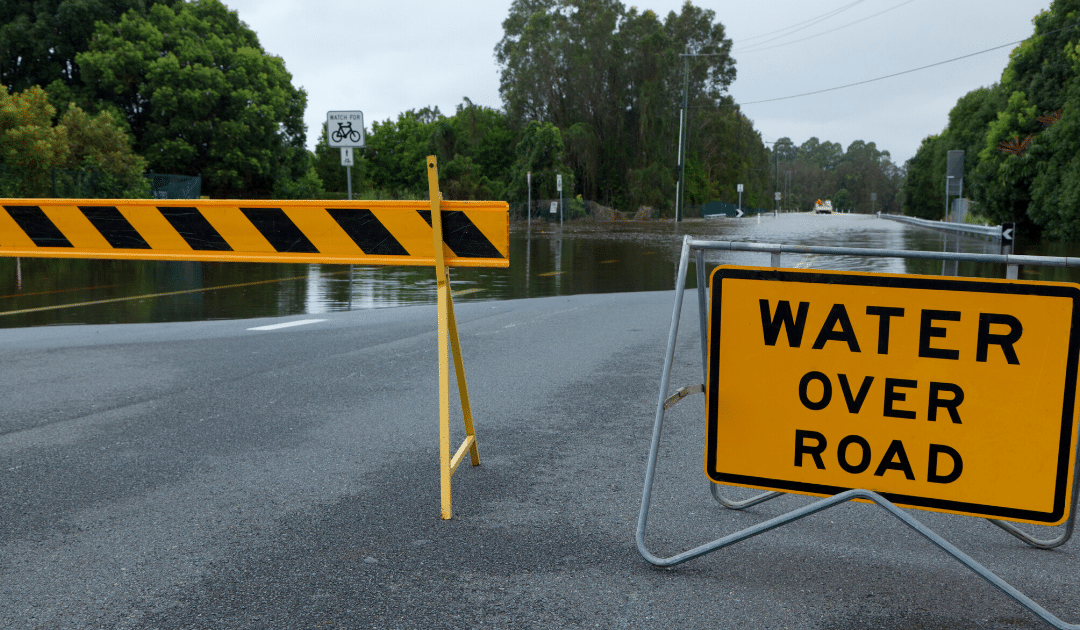Floods are the most common of all weather-related natural disasters. They happen in every U.S. state and are more deadly than hurricanes, tornadoes, and lightning.
Among flood events, flash floods can be especially dangerous. Why? They occur suddenly, often without warning. People are caught off guard and usually underestimate the strength, speed, and volume of water. Flash floods can happen within minutes or a few hours of heavy rainfall and can quickly become raging rivers that tear through washes, dry lakes, urban zones, and other low-lying areas.
Flash Flood Alerts: 3 Levels to Know
Staying safe during a flash flood starts with being informed. In the event of heavy rainfall (sustained or sudden), follow your local alert system, NOA Weather Radio, or other emergency advisory for information. Flash flood alerts fall into 3 danger levels:
Flash Flood WATCH—This means flash flooding is possible. A WATCH usually covers several counties. Stay alert and be ready to evacuate if necessary.
Flash Flood WARNING—Issued when flash flooding is happening or is imminent. It’s usually issued for smaller, more specific areas. When a WARNING happens in your area, move to higher ground immediately—you may have only a few seconds.
Flash Flood EMERGENCY—Very rare but issued when there is catastrophic damage and a significant threat to human life.
In the event of a flash flood, whether you’re at home or in the car, here are top tips for protecting yourself.
Staying Safe in Your Car
-
- Never drive through floodwater. Roadbeds may be washed out under the surface, or there could be submerged debris. Also, it only takes 12 inches of rushing water to carry away most cars, and just 2 feet for SUVs and trucks. Remember, when approaching a flooded road: Turn Around, Don’t Drown®!
- Stay off bridges over fast-moving water. Bridges can be washed out with little or no warning.
- Don’t drive around barricades. Crossing a barrier or driving through a road closure can not only put you in extreme danger but also land you a steep fine by authorities.
- Remain in your car if you’re surrounded by fast-moving water. However, if the water starts rising inside your vehicle, exit quickly and get onto the roof.
- Use extra caution at night when it’s harder to assess flood danger.
Staying Safe at Home or On Foot
-
- Avoid flood-prone areas such as canyons, drainage channels, streams and culverts.
- Do not walk into standing water, even if it looks calm. Waters can rise suddenly, and it only takes 6 inches of rushing water to knock an adult off their feet.
- Get to higher ground fast if your home floods. Avoid going to a closed attic, as you may become trapped. Only get on your roof as a last resort.
- Keep children and pets close by.
- Avoid parking near streams or rivers during flood conditions.
Given that floods are a common and widespread occurrence, it’s smart to have your evacuation plan ready ahead of time, as well as an emergency kit and go bag. To protect yourself against damage to your home, consider buying a flood insurance policy.
This article is furnished by California Casualty, providing auto and home insurance to educators, law enforcement officers, firefighters, and nurses. Get a quote at 1.866.704.8614 or www.calcas.com.
- Graduation – When to Remove Your Child from Your Auto Policy - May 18, 2023
- How to Prevent Catalytic Converter Theft - May 17, 2023
- How Much Does Home Insurance Cost? - May 17, 2023

